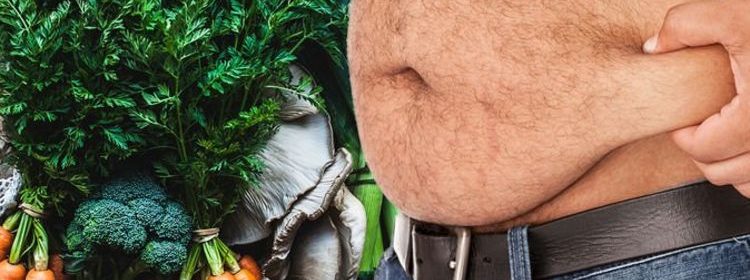How to get rid of visceral fat: ‘Specific’ vegetables proven to reduce belly fat – key veg

Dr Zoe Williams discusses visceral fat on This Morning
When you subscribe we will use the information you provide to send you these newsletters. Sometimes they’ll include recommendations for other related newsletters or services we offer. Our Privacy Notice explains more about how we use your data, and your rights. You can unsubscribe at any time.
The fat that lies just under the skin often makes one feel self-conscious but this is not the fat to worry about. Visceral fat, which lies near vital organs in the body, is linked to life-threatening conditions, such as heart disease and type 2 diabetes. Finding ways to eliminate visceral fat is therefore of paramount importance.
Fortunately, the foods we consume can help to reduce the stubborn belly fat.
A study published in the Journal of the Academy of Nutrition and Dietetics sought to examine the relationship between vegetable consumption and visceral fat reduction.
Specifically, researchers were interested in the impact dark green and deep orange/yellow vegetables, also known as nutrient-rich vegetables, have on visceral fat.
To examine this impact they conducted a cross-sectional study of 175 overweight Latino youth over five years.
Over the five-year period, the researchers found consumers of dark green and deep orange/yellow vegetables had 17 percent less visceral fat than non-consumers.
Intake of nutrient-rich vegetables was also positively associated with improved insulin sensitivity.
Insulin resistance – the driver of type 2 diabetes – is linked to visceral fat gain.
“In conclusion, consumption of specific vegetable types by overweight Latino youth is associated with positive metabolic outcomes, including reduced visceral and liver fat and risk factors for type 2 diabetes, even when consumed in small quantities,” the researchers wrote.
DON’T MISS
High blood pressure: Best drink to lower BP [TIPS]
Fatty live disease: Three perceptible signs [INSIGHT]
Statins and alcohol: Important advice – NHS [ADVICE]
What vegetables count as dark green and deep yellow/orange?
Dark green vegetables include beet greens, broccoli, collard greens, endive, escarole and kale.
Deep yellow vegetables include carrots, pumpkins, sweet potatoes and winter squash.
To maximise and not offset the benefits of eating these vegetables, it is important to look at your overall dietary pattern.
In general, if you want to reduce your belly fat, you’ll need to burn more calories (energy) than you consume, and eat the right kinds of food.
Bupa says the following can help you to achieve this:
- Make sure you eat a balanced diet. Try to eat at least five portions of fruit and veg each day, and include higher-fibre starchy foods in meals
- Have some reduced-fat dairy or soya drinks fortified in calcium
- Eat more beans, pulses, fish and eggs
- Eat small amounts of unsaturated oil
- Drink six to eight glasses of water each day
- Avoid adding salt or sugar to your meals.
According to the health body, protein can also be a helpful way to lose weight because it makes you feel fuller than carbs and fat do.
“So if you include a lean source of protein, such as skinless white chicken, in your meals you may find that you’re not as hungry, and so eat less.”
Good sources include chicken breast, tuna, mackerel, salmon, eggs, milk, red lentils, chickpeas, brown bread, nuts and soya.
You should complement a healthy dietary pattern with regular physical exercise.
Studies have shown that you can help trim visceral fat or prevent its growth with both aerobic activity (such as brisk walking) and strength training (exercising with weights).
According to Harvard Health, spot exercises, such as sit-ups, can tighten abdominal muscles but won’t get at visceral fat.
The health body adds: “Exercise can also help keep fat from coming back.”
Source: Read Full Article


